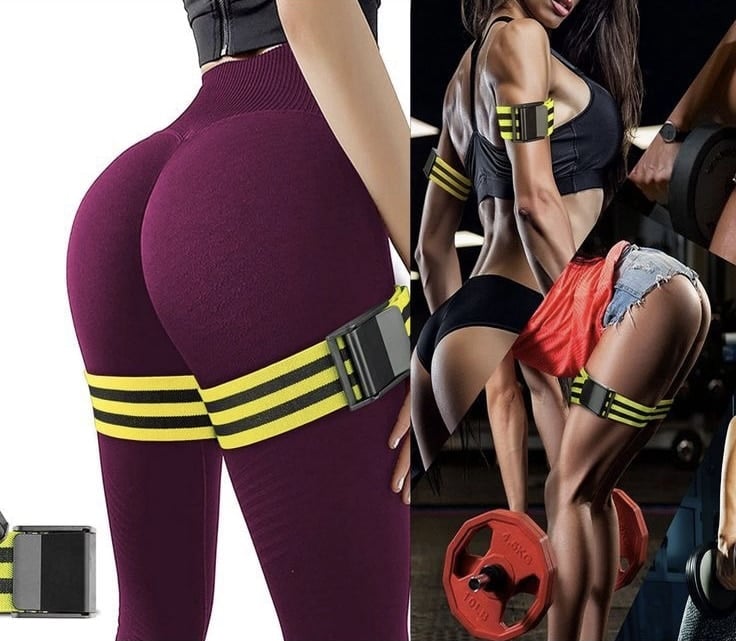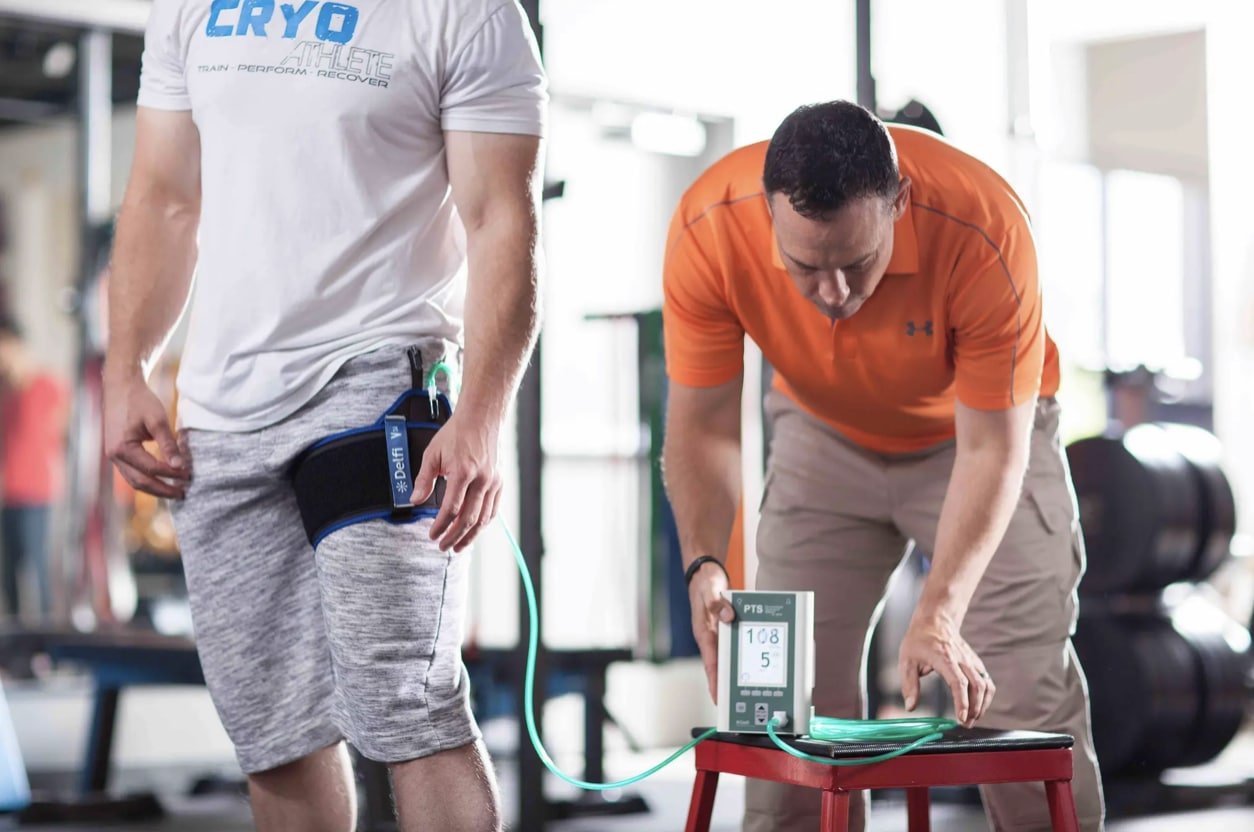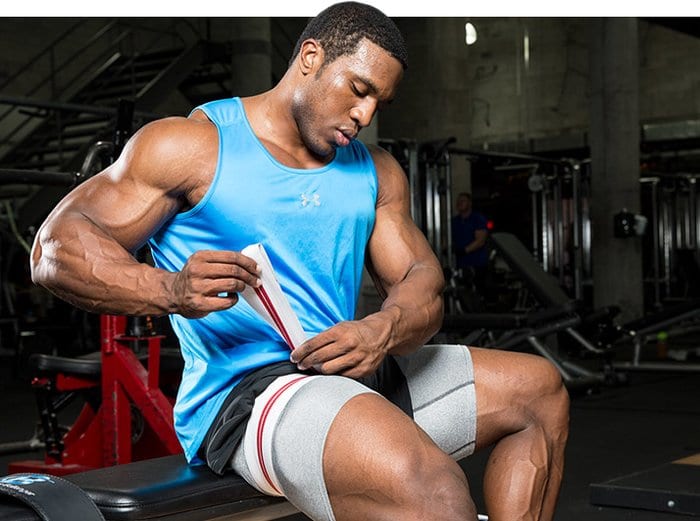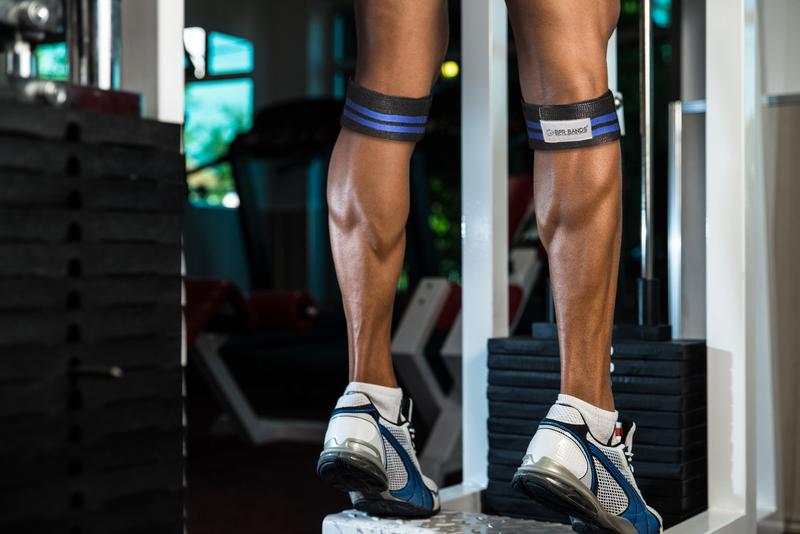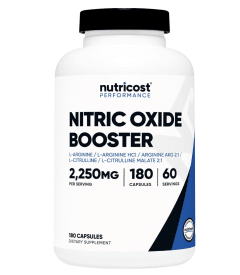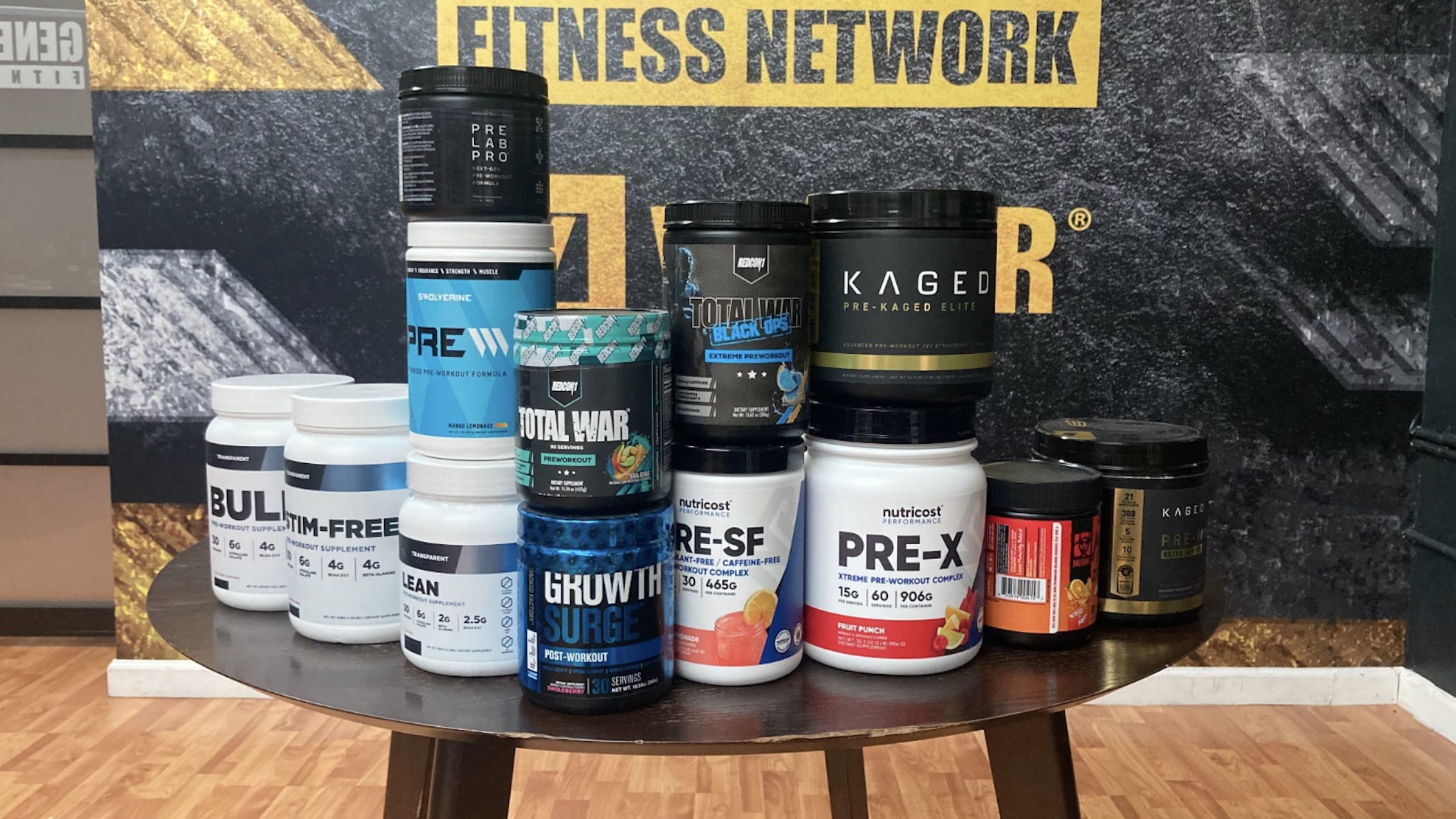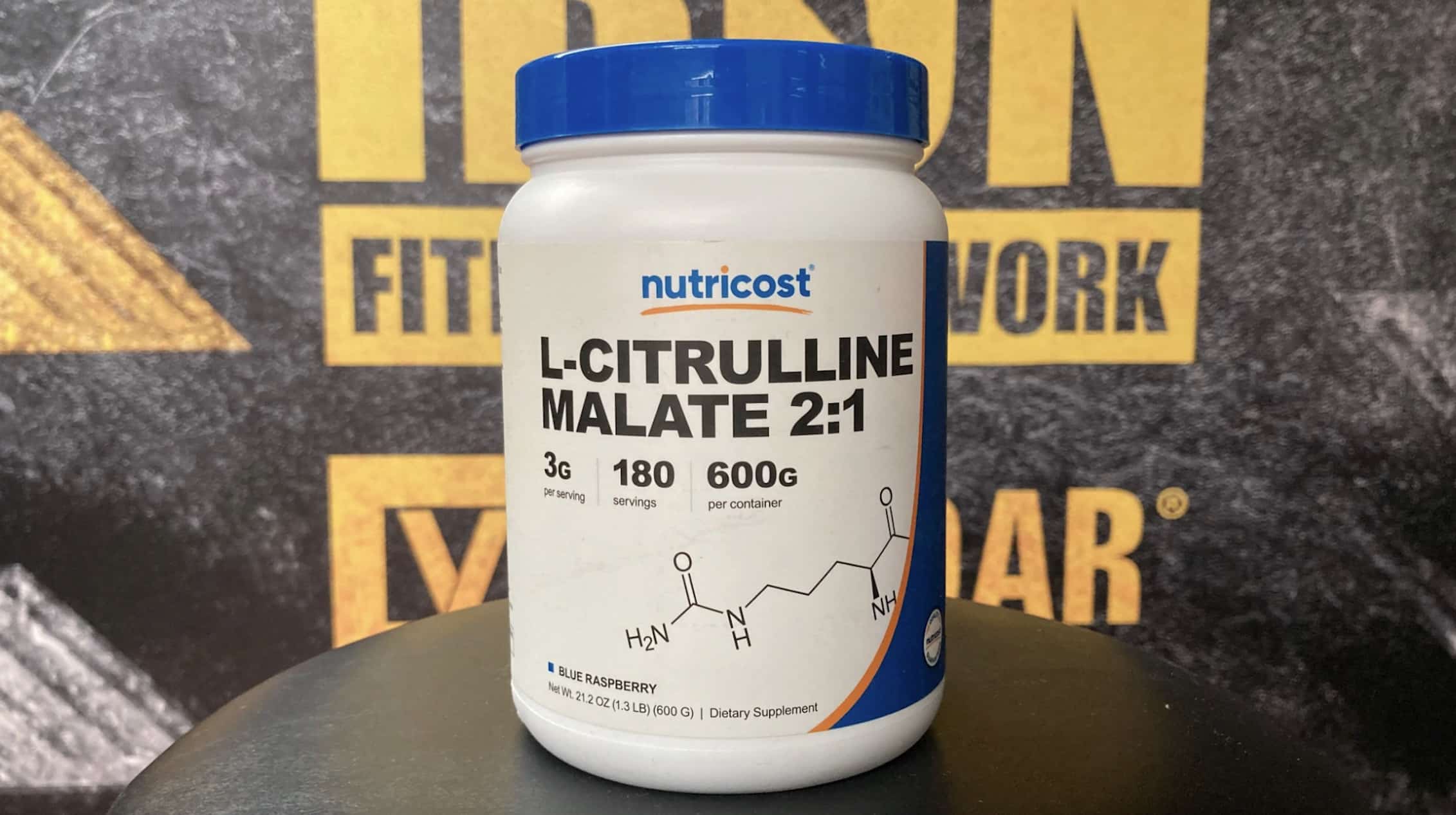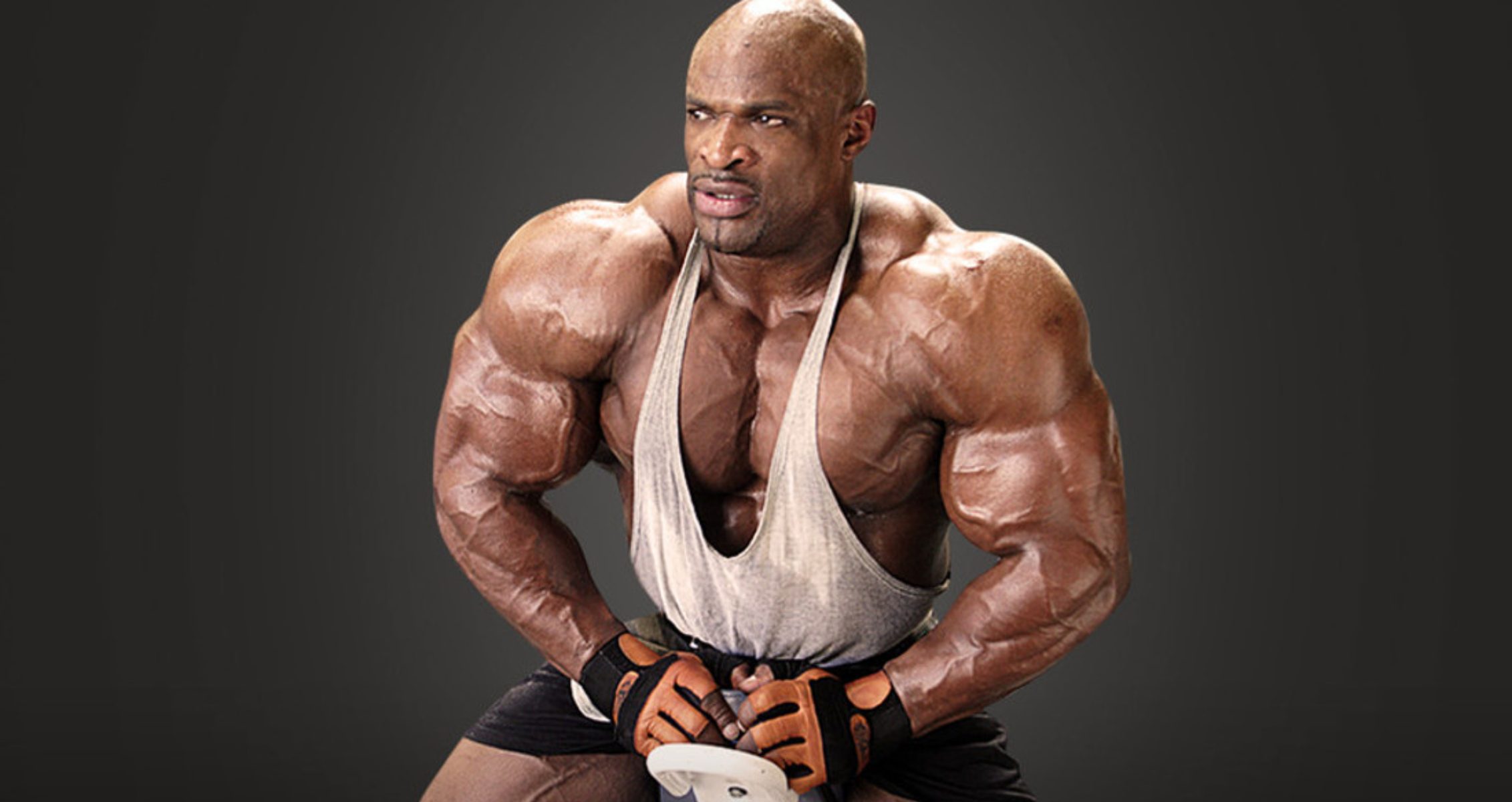Everything you need to know about blood flow restriction training
There comes a point in every lifter’s life when he cannot seem to make any progress, no matter how hard he tries. The plateau can cause despair and confusion in his ongoing struggle. Most people can relate to the scene, but not the pros. Pros incorporate advanced training techniques in their training routines, and so should you. In this post we will detail a guide to blood flow restriction training and all you need to know for advanced BFR calf training techniques.
What are Advanced Training Techniques?
Follow the same exercises long enough, and your muscles will catch up to your training style. As soon as your body gets used to your workouts, it will stop responding, and your gains will begin to taper off. You will then need to shock your muscles to stimulate muscle growth and break through the overhead ceiling.
Advanced training techniques shock your muscles by adding variety and increasing the intensity of your workouts. Most advanced techniques overload your muscles by increasing your muscle’s TuT (time under tension).
Types of Advanced Training Techniques
1. Superset
A superset is when you perform two or more exercises in succession without any rest. It could include training agonist and antagonistic muscles groups.
2. Dropset
It includes progressively decreasing resistance after every set (with no rest in between) until you hit failure.
3. Intraset Stretching
The intraset stretching technique includes holding resistance at the ‘stretched’ position after you have completed the desired number of reps of an exercise. After pausing at the bottom of the movement for 10-15 seconds, you then perform the same number of repetitions you did previously without racking the weight.
4. Negatives
While performing negatives, your training partner (or coach) helps you through the concentric phase of the exercise so that you can perform additional reps on the eccentric part of the motion. Lower the weight in a slow and controlled manner while performing negatives.
5. Rest-Pause
Perform as many reps as possible, rest for a few seconds, then perform additional repetitions. Repeat until you hit absolute muscle failure.
While most advanced techniques make you lift heavy or increase your muscle’s TuT, blood flow restriction training does things differently.
Pre-Requisites For Advanced Training Techniques
1. They Are Not For Everyone
They are called ‘advanced’ training techniques for a reason. If you are a beginner or an intermediate lifter, you should stick to orthodox bodybuilding exercises. Only think about adding an advanced training technique to your routine when you have milked the good old lifts.
Years of experience in the gym and knowledge of the body are needed to make the most of ATTs. They get you the best results when orchestrated with strategically planned regimens.
2. Don’t Push Yourself Too Hard
Many novice lifters are too hard on themselves when they can’t budge the needle in the right direction. They throw logic and reasoning out of the window and try to add as many ATTs as they can possibly think of in their workouts.
Several techniques (like BFR) should be used during planned overreaching, whereas techniques like prioritization can be followed throughout the year.
Remember: going crazy with ATTs can stagnate progress as it increases the risk of overtraining and injury.
3. Switch Them Up
Follow the same advanced training techniques for too long, and you’ll end up where you started. We understand that you love dropsets, but if you don’t want them to lose their charm, you shouldn’t perform them at the end of every set. Treat ATTs like creatine. Cycle them to get the best results.
How Blood Flow Restriction Training Helps In Building Muscle
What is Blood Flow Restriction Training?
Blood flow restriction (BFR) training is also known as occlusion training, hypoxic training, KAATSU, and ischaemic training. BFR training includes restricting blood flow to your target muscle groups for building strength and size.
- BFR training cuffs hinder the flow of oxygenated blood to the target muscles and prevents deoxygenated blood from returning out.
- It forces blood to stay inside your target muscles throughout the set resulting in a nasty pump.
- This process creates a by-product accumulation effect and induces an oxygen-low muscle state. It stimulates anaerobic adaptations that are favorable for muscle growth.
- Blood flow restriction training causes a swelling effect on muscles and a buildup of metabolites, such as lactic acid, that stimulate muscle growth.
- The direct fatigue to muscles caused by the bands forces the nervous system to recruit fast-twitch muscle fibers. These fast-twitch fibers have the highest capacity to grow.
But isn’t Restricting Blood Flow to a Muscle Bad?
Well, it is bad if you are restricting blood flow for long periods. A typical BFR set does not last longer than 60-seconds, so we are good here. BFR of veins increases your blood’s lactate concentration. It helps you work out at a lower intensity while giving the feeling of a much harder workout.
Yes, there are mind games at work here too. When your brain thinks your body is experiencing a physical challenge, it signals the pituitary gland to release more growth hormones. GH (growth hormones) are responsible for building muscle mass and strength.
To put all BFR safety worries to rest, St. Mary’s University conducted a study. The research found that compared with low-load training, low-load BFR training is more effective, tolerable, and therefore a potential clinical rehabilitation tool.
Another study concluded that BFR training led to no prolonged reduction in muscle function or increase in indications of muscle damage in blood tests.
Benefits of Blood Flow Restriction Training
- Improves strength.
- Better calisthenics workout.
- Increases aerobic capacity.
Different Types of Blood Flow Restriction Training Equipment
1. KAATSU Device
Have you ever seen a bro walking around with cuffs in the gym? No, he is no Christian Grey looking for his Anastasia Steele. Those cuffs are known as KAATSU devices. These cuffs are specialized BFR training tools used to restrict venous blood flow.
2. Pressure Cuff
If you want to take your BFR training a step further, you should invest in a pair of pressure cuffs. With this BFR equipment, you can dial in the exact amount of pressure you want around your muscles. We recommend this to people who know what they are doing.
3. Knee and Elbow Wraps
Blood flow restriction training on a budget doesn’t get better than this. Knee wraps and elbow wraps are incredibly effective substitutes for dedicated BFR equipment.
Which Type of Band Should you Use?
A 2012 study of 116 people indicated a measurable difference in using narrow and wide cuffs in BFR training. Wide BFR cuffs restrict flow at a lower pressure and can be less effective than narrow cuffs. BFR training is all about chasing the pump, and you will have to try different bands tied at varying pressures to find out what works best for you.
Most Common Mistakes While Blood Flow Restriction Training
1. Tying The Bands At The Wrong Place
While BFR training, you should only wrap at the top of the arm or leg. You can wrap your arms for a shoulder or chest workout and your legs for a glute workout.
According to research, compared to a 13+ cm cuff, a 5-9 cm cuff reduces the risk of occluding the arteries. For the same reason, if you are using knee or elbow wraps for BFR training, you should wrap them at the top of your limbs in a layered manner rather than a spiral down the arm or leg.
2. Your Blood Flow Restriction Bands Are Too Tight
Some people make the mistake of tying the bands too tight. Overly tight bands/cuffs could lead to a restriction of both – arteries and veins. Here is a high school biology lesson for you:
- Arteries – bring blood to muscles.
- Veins – take blood away.
For a maximal swelling response, you want blood coming to the muscles and staying there. Meaning – you want the arteries to work just fine but restrict the veins.
In fact, there is evidence that if you occlude both arteries and veins, you might end up decreasing muscle growth at the site wrapped.
You can solve this problem by modifying perceived pressure on blood flow during BFR training. Wrap your muscles at a perceived pressure ranging between 0-10, with 10 being the tightest.
Perceived pressure of 7 out of 10 for legs and 6 out of 10 for arms provide the best result. A 10 out of 10 perceived pressure will result in total restriction of both – arteries and veins.
3. Skipping Warm-Ups and Cool-Downs
Before you begin your BFR workout, you should perform a light warm-up of around five minutes (walking or cycling), followed by 15 unwrapped reps with the weight you will use for your first BFR set. Doing this routine will get your blood pumping.
After your blood flow restriction exercise, you should take off your cuffs/wraps and stretch out your muscles. Stretching can help flush out the built-up lactic acid in your muscles.
4. Going Too Heavy
Perform a blood flow restriction set at the same intensity as a normal warm-up set. You don’t need to be lifting more than 30-50% of your one-rep max (1RM) while performing any BFR exercise. Going heavier than this will only sabotage your form and won’t add anything to the bottom line.
The primary advantage of BFR is that it can help increase muscle size while training at low intensities. A study shows that training at 40% of your 1RM can be the sweet spot for blood flow restriction training. Going heavier than this does not increase muscle fiber recruitment.
5. Performing BFR Training Every Day
Although blood flow restriction training causes greater fatigue immediately after a training session, there are no increases in muscle damage or declines 24 hours later.
Since this type of training has low recovery demands as compared to high-intensity training, it can be followed on alternate days. A study found that 2-3 days of BFR training per week is best for gains in strength and muscle.
6. Not Training To Failure
Blood flow restriction training recruits the larger, fast-twitch muscle fibers. These fibers are either activated by heavy resistance or fatigue. Research shows that the closer you get to muscular failure, the greater is the fast-twitch muscle-fiber recruitment. So, training to failure in low-intensity conditions is necessary for optimal muscle fiber recruitment while performing BFR training.
The Best Supplement for Blood Flow
Nutricost Nitric Oxide Booster is a quick and efficient way to boost your pumps, energy, and your overall heart health.
Nutricost’s Nitric Oxide Booster helps to improve health overall when taken regularly. Even if you do not workout, these supplements are a great addition to your daily vitamin and mineral routine, as they promote overall healthy.
Getting enough nitric oxide through your blood vessels to other parts of the body is an important part of living a healthy and sustainable life. By taking these supplements offered by Nutricost, one can expect to see a significant improvement in their cardiovascular health as well as post-workout recovery.
Check out the full Nutricost Nitric Oxide review here!
Conclusion
Blood flow restriction training can help increase muscle growth as a standalone training routine and even as part of your regular training program. We recommend using BFR training on a light recovery day or for annihilation at the end of a workout.
BFR training can be a godsend for people recovering from an injury. This advanced training principle causes very little muscle damage and can be used during de-loading periods to supplement as much as 60 percent of the high-intensity workload.
Do you use blood flow restriction technique in your workouts?
Let us know in the comments below. Also, be sure to follow Generation Iron on Facebook, Twitter, and Instagram.

